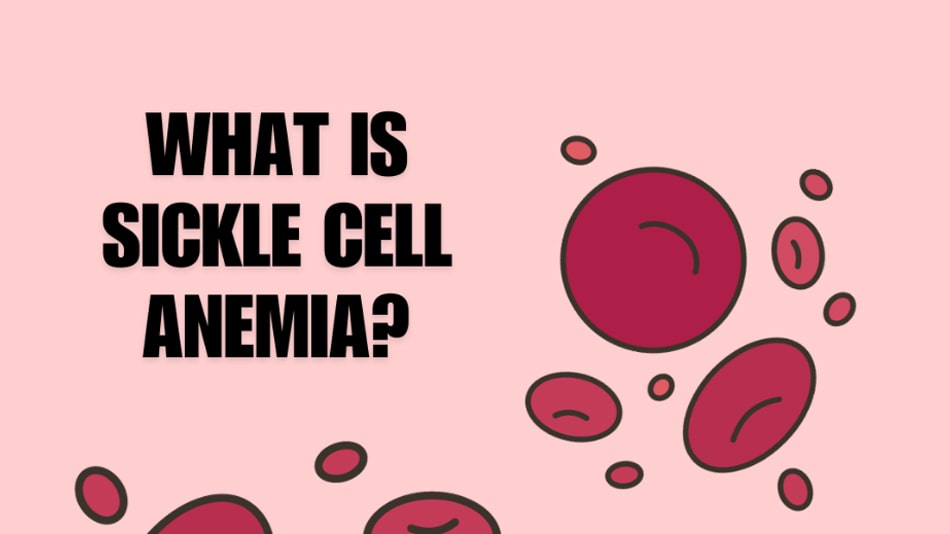Sickle cell anemia is an inherited blood problem where your red blood cells, which are usually round and flexible, change into a shape like a crescent or sickle. These odd-shaped cells can get stuck in the tiny pathways in our body, called blood vessels, which can cause less oxygen to flow through the body and other problems like acute pain crisis and stroke. Previous investigations showed that high risk children receiving long-term blood transfusions were less likely to have strokes. Doctors and researchers wanted to see which treatment was better: receiving long-term blood transfusions or taking a medicine called hydroxyurea. They did a study called the TWiTCH trial to study if hydroxyurea works as well as the blood transfusions.
 This study was conducted at 26 hospitals across the USA and Canada to figure out the best way to help children (aged 4-16) with sickle cell anemia, who specifically had non-severe blood flow problems in their brains and were receiving blood transfusions. Researchers split the participants into two groups; one group continued to receive regular blood transfusions, and the other group took hydroxyurea, an oral medication that prevents hemoglobin cells from changing shapes. The goal was to determine if the medication works as well as the blood transfusions. The study lasted for 24 months, and researchers measured the change in blood flow velocity and vessel wall narrowing with transcranial dopplers.
This study was conducted at 26 hospitals across the USA and Canada to figure out the best way to help children (aged 4-16) with sickle cell anemia, who specifically had non-severe blood flow problems in their brains and were receiving blood transfusions. Researchers split the participants into two groups; one group continued to receive regular blood transfusions, and the other group took hydroxyurea, an oral medication that prevents hemoglobin cells from changing shapes. The goal was to determine if the medication works as well as the blood transfusions. The study lasted for 24 months, and researchers measured the change in blood flow velocity and vessel wall narrowing with transcranial dopplers.
 Between September 2011 and April 2013, 121 children with sickle cell anemia were enrolled in the TWiTCH study. After checking the results early on, they discovered that the medicine worked just as well, if not a bit better, than the blood transfusions. The researchers found that the medicine helped keep the blood flowing smoothly in the brain. No one in the study had a stroke, but a few children in both groups experienced some temporary health issues. They also looked at MRIs at the end of the study and found no new strokes in either groups of patients.
Between September 2011 and April 2013, 121 children with sickle cell anemia were enrolled in the TWiTCH study. After checking the results early on, they discovered that the medicine worked just as well, if not a bit better, than the blood transfusions. The researchers found that the medicine helped keep the blood flowing smoothly in the brain. No one in the study had a stroke, but a few children in both groups experienced some temporary health issues. They also looked at MRIs at the end of the study and found no new strokes in either groups of patients.
Researchers concluded that for high-risk children with sickle cell anemia and abnormal transcranial doppler velocities (suggests abnormal blood flow to the brain), after four years of transfusions and without severe blood vessel disease, hydroxyurea therapy can replace chronic transfusions to help maintain blood vessel flow and prevent stroke.
Reference, Original Abstract:
Ware RE, Davis BR, Schultz WH, Brown RC, Aygun B, Sarnaik S, Odame I, Fuh B, George A, Owen W, Luchtman-Jones L, Rogers ZR, Hilliard L, Gauger C, Piccone C, Lee MT, Kwiatkowski JL, Jackson S, Miller ST, Roberts C, Heeney MM, Kalfa TA, Nelson S, Imran H, Nottage K, Alvarez O, Rhodes M, Thompson AA, Rothman JA, Helton KJ, Roberts D, Coleman J, Bonner MJ, Kutlar A, Patel N, Wood J, Piller L, Wei P, Luden J, Mortier NA, Stuber SE, Luban NLC, Cohen AR, Pressel S, Adams RJ. Hydroxycarbamide versus chronic transfusion for maintenance of transcranial doppler flow velocities in children with sickle cell anaemia-TCD With Transfusions Changing to Hydroxyurea (TWiTCH): a multicentre, open-label, phase 3, non-inferiority trial. Lancet. 2016 Feb 13;387(10019):661-670. doi: 10.1016/S0140-6736(15)01041-7. Epub 2015 Dec 6. PMID: 26670617; PMCID: PMC5724392.
Abstract Translation: Christine Zhang
Graphics: Christine Zhang
Medical Editor: Fiza Laheji, MD
Junior Editor: Sanjana Sivakumar





